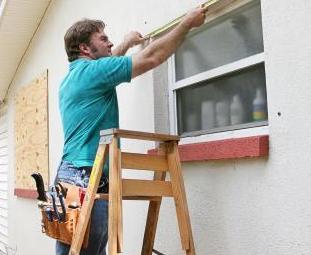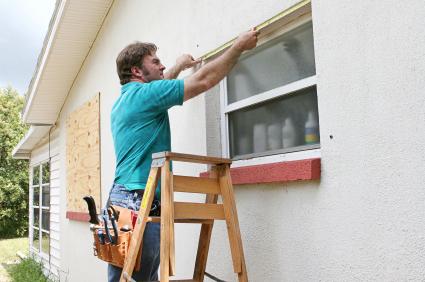 The damage inflicted by Hurricane Sandy offers an opportunity for residents to reinforce their homes as they rebuild and an example of what could happen if they don’t.
The damage inflicted by Hurricane Sandy offers an opportunity for residents to reinforce their homes as they rebuild and an example of what could happen if they don’t.
The Insurance Institute for Business & Home Safety offers new insights and guidance focused on key rebuilding issues to help residents and business owners repair or rebuild so that their property is stronger and more resilient.
“While everyone is anxious to get back into their homes or resume business operations as quickly as possible, it is critical that people also focus on how to prevent damage and destruction from the next big storm, because there will be another one,” Julie Rochman, IBHS president and CEO, said in a statement. “Taking actions based on the building science guidance from IBHS will help ensure properties are better able to withstand the next extreme weather event.”
The Northeast was most recently hit by Irene and Sandy, both of which were largely flooding events, yet such storms can also bring high winds, which wreak havoc on properties. Now, before the winds blow, is the time to harden communities in the Northeast by strengthening individual homes and businesses, and putting realistic, actionable plans in place for before, during and after a storm.
IBHS’ new paper entitled Rebuilding and Repairing Safer and Stronger Post-Sandy focuses on four key questions residents and business owners need to consider: 1) Is your roof strong enough? 2) Is the building tied together properly so it can stand up to extreme winds? 3) Are doors and windows protected? and; 4) Is the building properly elevated to avoid flooding? Specific guidance is offered about how to address each of these areas.
The second IBHS paper, Mitigation Lessons from Sandy: How to Protect Your Business from the Next Storm, summarizes business protection lessons from Sandy, and outlines how to embrace these lessons to ensure properties and operations are better prepared to withstand the next major storm.
In Status of Building Codes in New Jersey and New York: The Future of Resilience in a Post-Sandy Environment, IBHS examines current building codes and standards in New York and New Jersey, and provides critical information and suggestions to help increase building resilience for future storms.
“We need to need to think of buildings as systems and take a holistic approach toward repair and rebuilding. It only takes one weak link in the system for an entire building to fail,” Rochman said. “Fortunately, some of the most effective and valuable property protection techniques are quite cost-effective, particularly when measured against the many human and financial costs of heavily damaged or destroyed homes and businesses.”
The advice includes securing a roof by using shank nails, instead of smooth nails or staples, to attach the roof sheathing. This can double the strength of a residential roof at an average cost of around $100 per home.
Sealing the roof deck by covering all joints and seams with self-adhering roof tape can prevent a wind-driven rain from getting inside the home, at a cost of about $500.
Impact-rated windows are an easy and passive protection system. If these are unaffordable, homeowners the IBHS advises having shutters ready for all windows and doors. These should have permanent anchors and everything should be labeled to allow for quick installation when a storm is on the way.
Elevating a building above the minimum base flood elevation standards of the Federal Emergency Management Agency and the National Flood Insurance Program.












